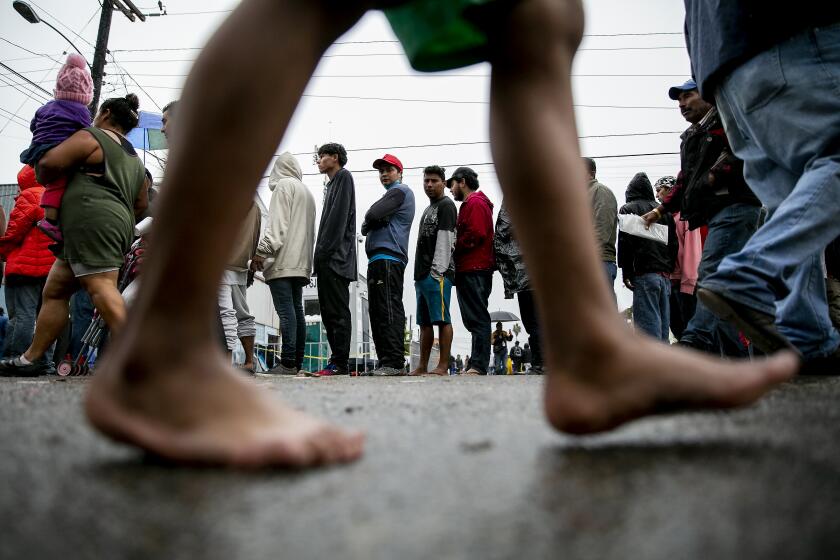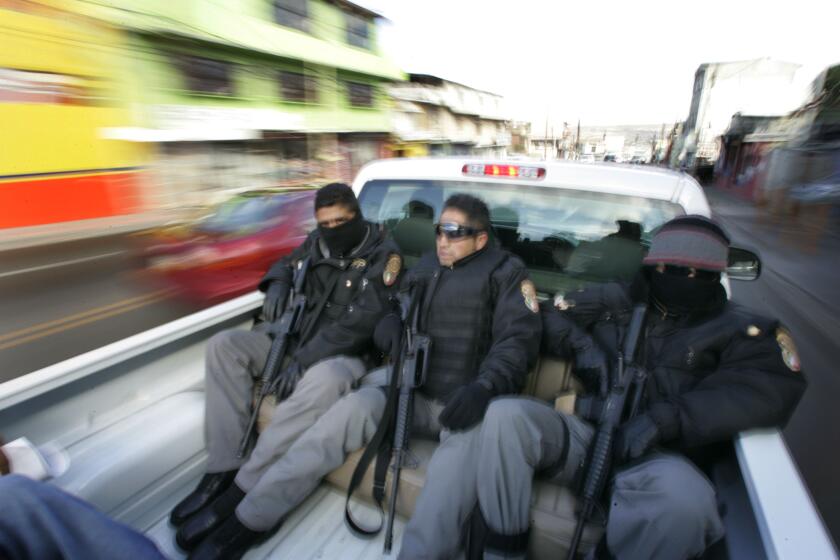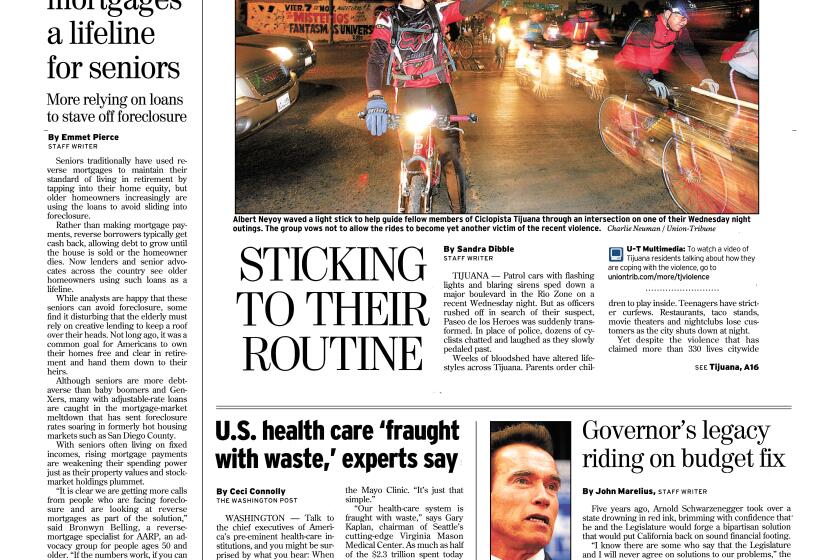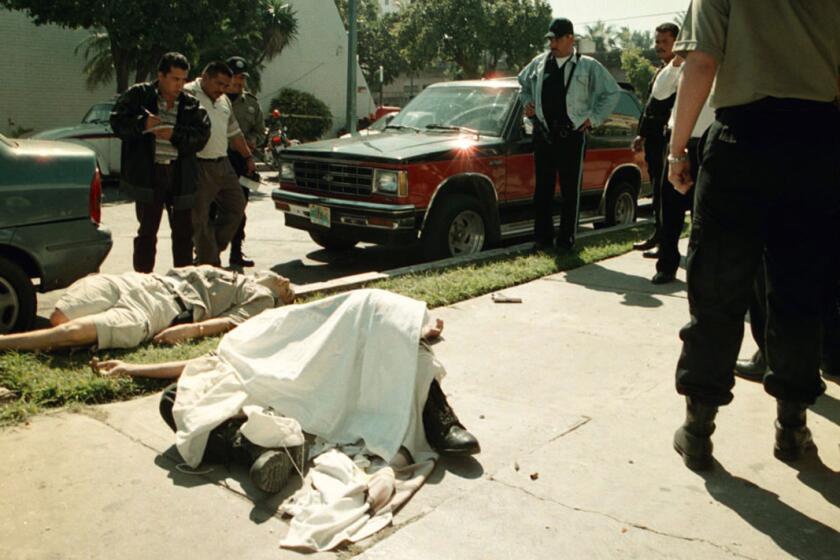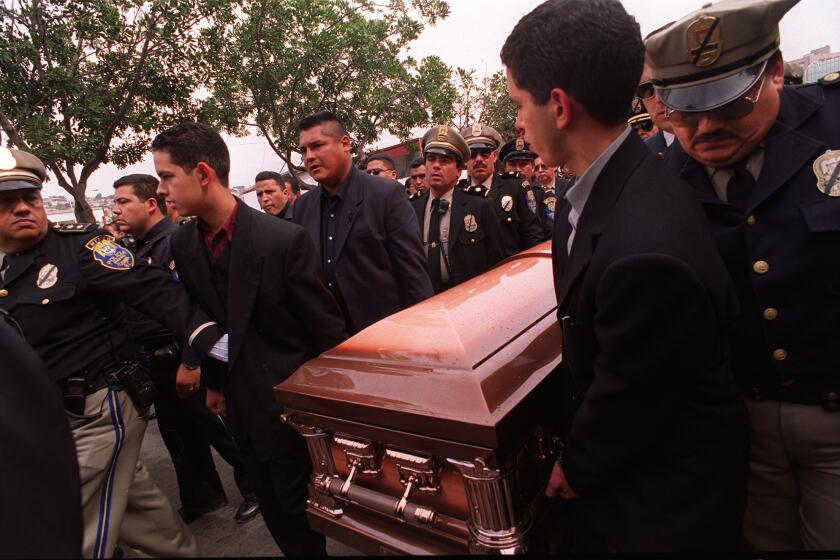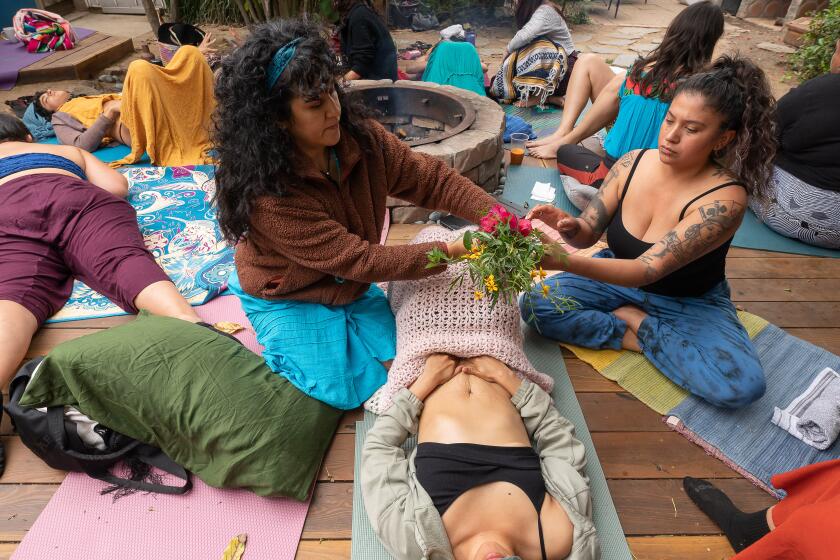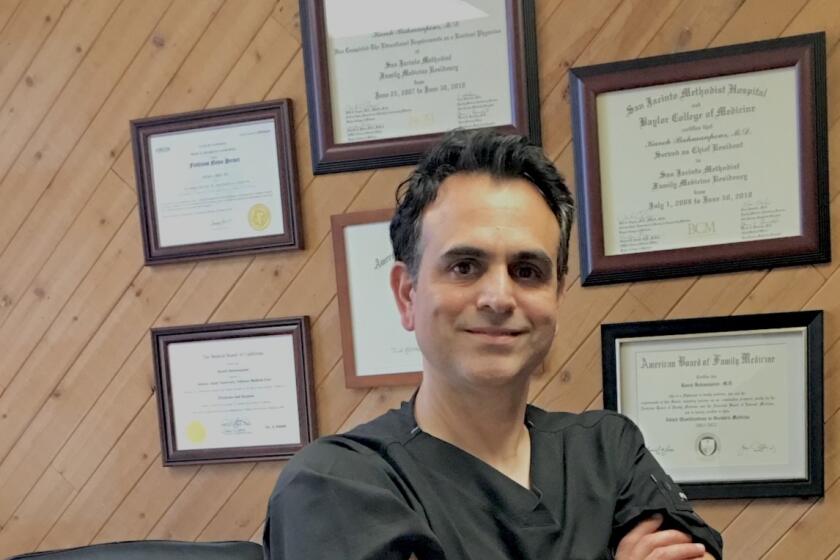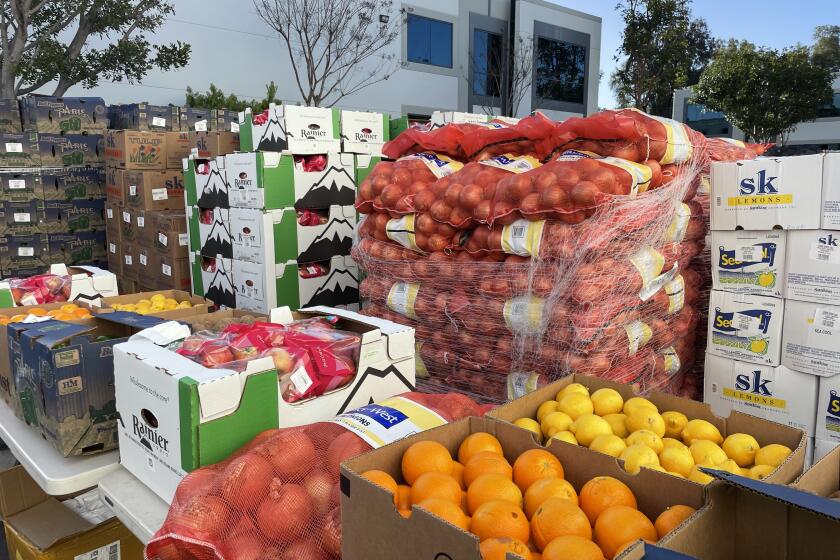Opinion: After writing about Tijuana for decades, I can’t imagine my life without this city
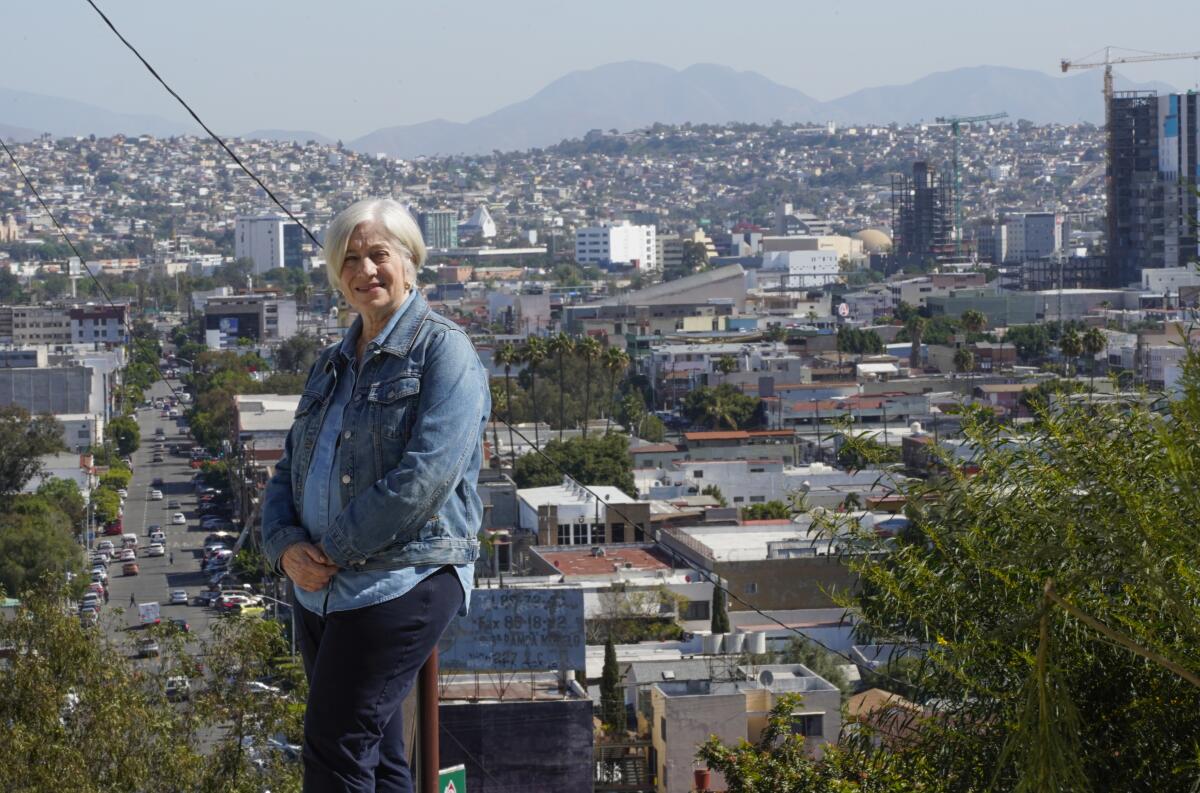
I hope my Border City podcast opens a window for people who have ever wondered about Tijuana, about Mexico.
Dibble, a freelance journalist, was a staff writer for The San Diego Union-Tribune. She lives in Imperial Beach.
I arrived in Tijuana knowing almost nothing about the vast city that hugs the California border when I moved there from Washington, D.C., in 1994 to take a job as a border reporter for The San Diego Union-Tribune. I came with neither a strong journalistic vision nor a life plan, just a gut feeling that there might be a place for me in a busy border city. If things did not work out, I figured it would be one last adventure as I sailed into middle age.
Lee esta opinión en español
Después de escribir sobre Tijuana durante décadas, no puedo imaginar mi vida sin esta ciudad
We provide this platform for community commentary free of charge. Thank you to all the Union-Tribune subscribers whose support makes our journalism possible. If you are not a subscriber, please consider becoming one today.
Now 28 years later, I am retired from the Union-Tribune and living in Imperial Beach — close enough to see Tijuana’s lights from my terrace. I cannot imagine my life without Tijuana, where I often cross the U.S.-Mexico border to see friends, sing in a chorus, share a meal, attend concerts and report freelance stories.
Over the past three years, I have also been consumed by a podcast, Border City. It’s an eight-episode narrative of my time working and living on the border. I wondered when editor Susan White and I started the process in March 2019 if there was even a story to tell. Yet now I think: How did I find so much to say, but come away feeling I had barely touched the surface?
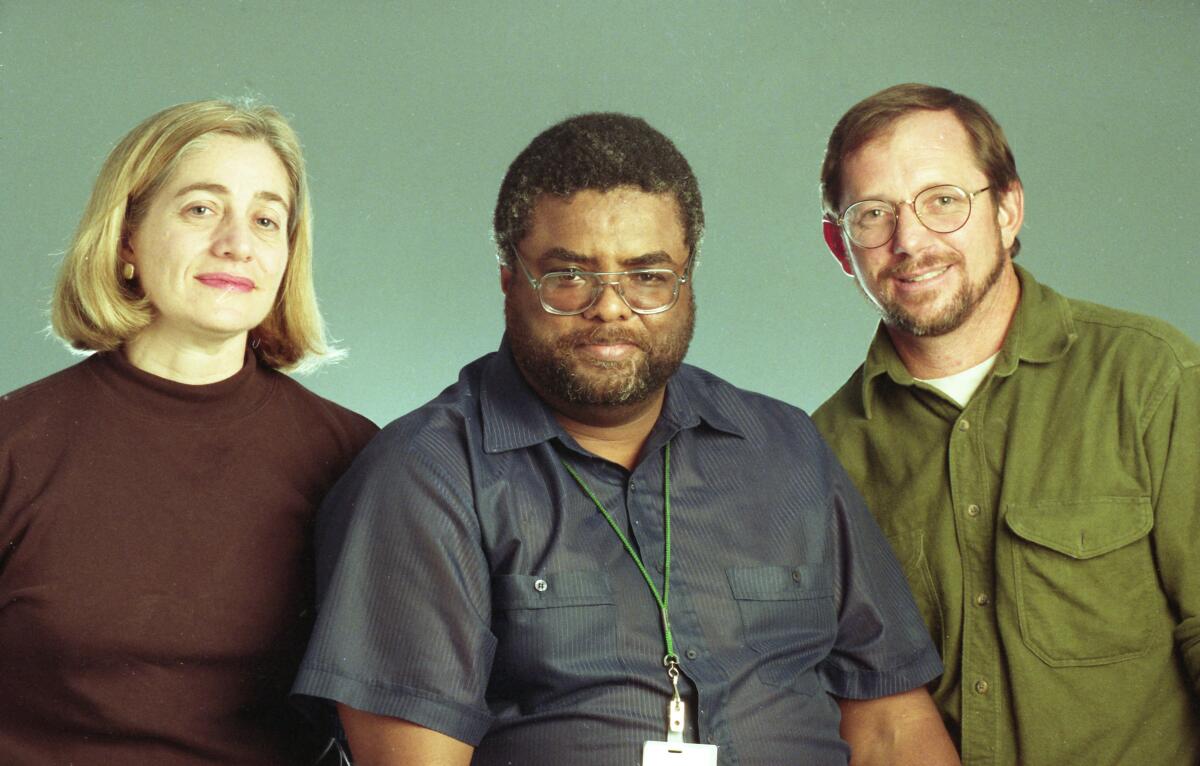
Even after all these years, I often feel as though I am seeing Tijuana for the first time. Sometimes, it is just the way the falling daylight strikes el Cerro Colorado, the tan hill in eastern Tijuana that rises above the urban sprawl. Or the powerful murals painted on the sides of neglected buildings in the city’s Zona Norte neighborhood. Or the young Haitians — who just yesterday were migrants — stepping briskly through downtown, like other Tijuanenses.
Reporting in Tijuana never gets old. Because it’s constantly evolving. Political parties, cuisine, art, music, migration, the maquiladora industry, drug trafficking, border enforcement — everything has changed over the past three decades. Except of course, for the things that stay the same: the city’s vibrant, entrepreneurial spirit and its ability to absorb a constant flow of newcomers and adapt to ever-shifting global winds.
To people from outside the city, Tijuana is often viewed solely through the lens of violence — and that dismays me. The city can be dangerous, and homicide rates are high, particularly in some areas where drug dealers are fighting for turf. But I drive freely to all corners of the city, albeit with caution to neighborhoods that are not familiar.
There are many ways to see the sprawling city of Tijuana, including through the eyes of journalists on both sides of the U.S.
I feel awe and reverence when I think about Tijuana. For the migrants and refugees who leave behind everything they know and make their way to the border. For the Tijuana residents who refuse to give up on their city. For the reporters who continue to take risks. For the artists, musicians and chefs who push the city in new directions.
I did not know much about the border when I came. But I had learned Spanish in high school. And I attended a graduate program in international journalism at the University of Southern California created by Murray Fromson, the late visionary CBS news correspondent who brought together a small group of U.S. and foreign journalists for a year’s study that focused largely on Mexico. It gave background that served me throughout my time covering Baja California, and especially Tijuana, its largest city.
Tijuana sometimes breaks my heart. It deserves a better U.S. neighbor — one that does not keep demanding drugs and sending weapons. It desperately needs strong urban planning for a mass transit system, public parks, sewage collection and treatment. More than anything, it needs rule of law — well-trained and funded police and crime investigators, a strong judiciary, and government actions open to public scrutiny and accountability. It needs a legal system that guarantees that everyone, rich or poor, can get a fair shake. It needs to be a place where journalists can work without fear of violence.
Ultimately, Border City is a memoir, both journalistic and personal, that covers the period 1994 to 2019 — a time of rapid growth, rising drug violence, and dramatic shifts in migration at the U.S. border. It chronicles the effects of organized crime on the city’s residents and their efforts to fight back.
But there is a parallel story, of my own slow discovery of Tijuana and my search for my own place in it. It is a story that won’t make headlines. But it is one I hope opens a window for people who have ever wondered about Tijuana, about Mexico — or simply about finding one’s way in a new place — wherever that may be.
My greatest dream is that listeners in San Diego and beyond who hear Border City will feel more connected to Tijuana, and that some may venture down for a meal, a play, a concert, an art tour, a volunteer experience. I hope they will see what I have learned: San Diegans are fortunate to have Tijuana as a neighbor.
Get Weekend Opinion on Sundays and Reader Opinion on Mondays
Editorials, commentary and more delivered Sunday morning, and Reader Reaction on Mondays.
You may occasionally receive promotional content from the San Diego Union-Tribune.



